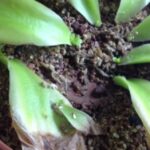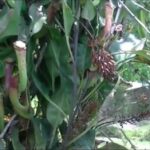As an Amazon Associate, this site earns commissions from qualifying purchases. For more details, click here.
Nepenthes, commonly known as tropical pitcher plants or monkey cups, are fascinating carnivorous plants that thrive in specific environmental conditions. Choosing the right location to plant them is crucial for their health and growth. Whether you are cultivating them indoors or outdoors, several factors must be considered to ensure optimal development.
1. Understanding Nepenthes Habitat
Nepenthes are native to tropical regions of Southeast Asia, including Borneo, Sumatra, the Philippines, and parts of Australia. These plants typically grow in nutrient-poor soils and rely on their pitchers to capture insects for nutrients. They are generally found in two main types of environments:
- Highland Nepenthes – Thrive in cooler, higher-altitude locations with high humidity.
- Lowland Nepenthes – Prefer warm, humid, and stable temperatures year-round.
2. Growing Nepenthes Outdoors
If you live in a warm, humid climate, you may be able to grow Nepenthes outdoors successfully. Here are some factors to consider:
- Climate: If temperatures consistently range between 70-85°F (21-29°C) during the day and 50-70°F (10-21°C) at night, your environment may be suitable.
- Humidity: Nepenthes require humidity levels of at least 50-70%. Highland species generally need higher humidity than lowland species.
- Sunlight: Provide bright, indirect sunlight or dappled shade. Avoid direct midday sun, which can scorch the leaves.
- Soil & Drainage: Use a well-draining mix of sphagnum moss, perlite, and orchid bark. Avoid standard potting soil, as it retains too many nutrients.
- Protection: In regions with cold winters, Nepenthes should be brought indoors or placed in a greenhouse to prevent frost damage.
3. Growing Nepenthes Indoors
For those living in less suitable climates, growing Nepenthes indoors is a great alternative. Here’s how to create an ideal indoor environment:
- Light Requirements: Place the plant near a bright window with filtered sunlight or use grow lights to provide sufficient light exposure.
- Temperature & Humidity: Maintain a temperature appropriate for the specific species (highland or lowland). Increase humidity with a humidity tray, misting, or a greenhouse setup.
- Air Circulation: Ensure good air movement to prevent fungal issues. Using a small fan can help.
- Watering & Feeding: Use only distilled water, rainwater, or reverse osmosis water to keep the soil moist but not waterlogged. While Nepenthes catch their own food, occasional feeding with insects or diluted fertilizer can support growth.
4. Greenhouse Cultivation
For serious enthusiasts, a greenhouse is an excellent way to cultivate Nepenthes year-round. A greenhouse allows precise control over temperature, humidity, and light.
- Highland species benefit from nighttime cooling, which a ventilated greenhouse can provide.
- Lowland species thrive in consistently warm conditions, making heated greenhouses ideal for their cultivation.
Conclusion
Selecting the right location for Nepenthes is essential to ensure healthy growth and pitcher production. Whether planting them outdoors in a suitable climate, indoors with controlled conditions, or in a greenhouse, meeting their specific requirements for light, temperature, humidity, and soil will result in thriving plants. By mimicking their natural environment as closely as possible, you can enjoy the beauty and unique characteristics of these extraordinary carnivorous plants.

My fascination with carnivorous plants began many, many years ago with Venus Fly Traps. Now I am more than happy to impart what I know with other enthusiasts and those who are curious about meat eating plants.


